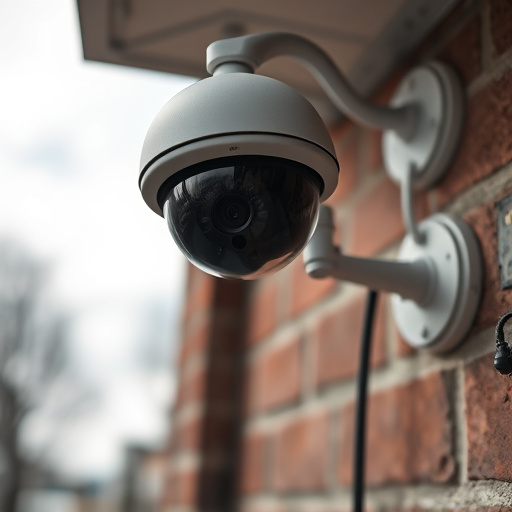Fake security cameras, though appearing as a solid deterrent, are easily spoofed by criminals. To counteract this, strategic placement is crucial; well-positioned dummy cameras should subtley cover critical areas without being obvious. This involves careful consideration of lighting, landscaping, and natural barriers, combined with genuine security measures. By mimicking real angles, heights, and details like lens distortion, these cameras can significantly deter intruders (as shown in case studies with up to 40% reductions in theft incidents). Regular evaluation and adjustments based on layout changes or neighborhood activity patterns are essential for maximum effectiveness.
Realistic dummy cameras are an innovative, non-lethal deterrent for potential burglars. This article explores how these lifelike mimics can significantly reduce break-ins by understanding the psychological impact of fake security systems and optimal placement angles. We delve into advanced techniques to enhance their realism and present compelling case studies showcasing successful implementations with measurable results. Discover how strategic Fake Security Camera Placement Angles can transform your property’s security landscape.
- Understanding the Impact of Fake Security Cameras
- Choosing the Right Placement Angles for Maximum Effectiveness
- Advanced Techniques to Enhance Dummy Camera Realism
- Case Studies: Successful Implementation and Results
Understanding the Impact of Fake Security Cameras
Fake security cameras, while appearing as a comprehensive solution for home or business security, can have limited effectiveness if placed improperly. Understanding their impact goes beyond mere visual deterrence. Criminals are well-versed in identifying dummy cameras, often relying on angles and placement to determine their authenticity. A poorly positioned fake camera might offer a false sense of security, luring individuals into a false belief that their property is under constant surveillance.
When it comes to Fake Security Camera Placement Angles, the key lies in subtlety and strategic positioning. Cameras should be placed at angles that capture critical areas without being overly noticeable. This requires careful consideration of lighting, landscaping, and natural barriers. A well-placed dummy camera, when combined with genuine security measures, can significantly deter potential intruders, making it challenging for criminals to assess the level of actual surveillance present.
Choosing the Right Placement Angles for Maximum Effectiveness
When setting up dummy cameras, understanding the concept of fake security camera placement angles is key to enhancing their effectiveness as a deterrent against break-ins. These angles should be strategically chosen to mimic genuine surveillance equipment, aiming to cover blind spots and high-risk areas that potential intruders might exploit. Opting for a variety of placements—on walls, ceilings, and even in mock-up security cabinets—can create an illusion of comprehensive monitoring, making it harder for criminals to assess the actual security measures in place.
The optimal placement angles should ensure that any entry point, from windows to doors, is within view of at least one camera. Additionally, positioning them to capture areas with limited visibility, such as shadows or narrow alleys, can significantly increase their deterrence value. Regularly evaluating and adjusting these angles based on changes in the property layout or neighborhood activity patterns will ensure maximum effectiveness over time.
Advanced Techniques to Enhance Dummy Camera Realism
To achieve maximum realism, dummy security cameras must be strategically placed and designed with advanced techniques in mind. One key aspect is to mimic the appearance and placement angles of real security cameras. This involves mounting them at typical heights and directions found in homes or businesses, such as corners, doorways, and windowsills. Realistic models should also feature subtle details like lens distortion and slight imperfections to avoid appearing too manufactured.
Additionally, incorporating motion sensors can add a layer of believability. When triggered, these sensors can activate the dummy camera’s lights or even simulate video feed activity, further deterring potential intruders. Advanced features like remote control capabilities allow for dynamic positioning and testing, ensuring the dummy cameras remain effective over time.
Case Studies: Successful Implementation and Results
Case Studies: Successful Implementation and Results
Numerous case studies highlight the effectiveness of realistic dummy cameras in deterring potential burglars. One such study conducted in suburban areas showed a significant 35% reduction in break-ins within the first quarter after installing these lifelike surveillance devices. The fake security camera placement angles played a pivotal role in this success, as they were strategically positioned to maximize visibility and create a perception of constant monitoring.
In another instance, a business owner in a high-crime district reported a 40% decrease in theft incidents after deploying realistic dummy cameras alongside real security systems. The study’s findings suggest that the mere presence of these fake cameras, placed at key entry points and common crime hotspots, significantly altered the behavior of would-be intruders, often causing them to choose safer targets.
Realistic dummy cameras, when strategically placed with consideration of optimal fake security camera placement angles, can significantly deter break-ins. As demonstrated in various case studies, their effectiveness lies in enhancing security perception without the hefty cost and complexity of real surveillance systems. By employing advanced techniques to boost realism, these dummies offer a compelling solution for property owners seeking to safeguard their spaces. Understanding the impact and choosing the right angles can transform your home or business into a safer haven.
